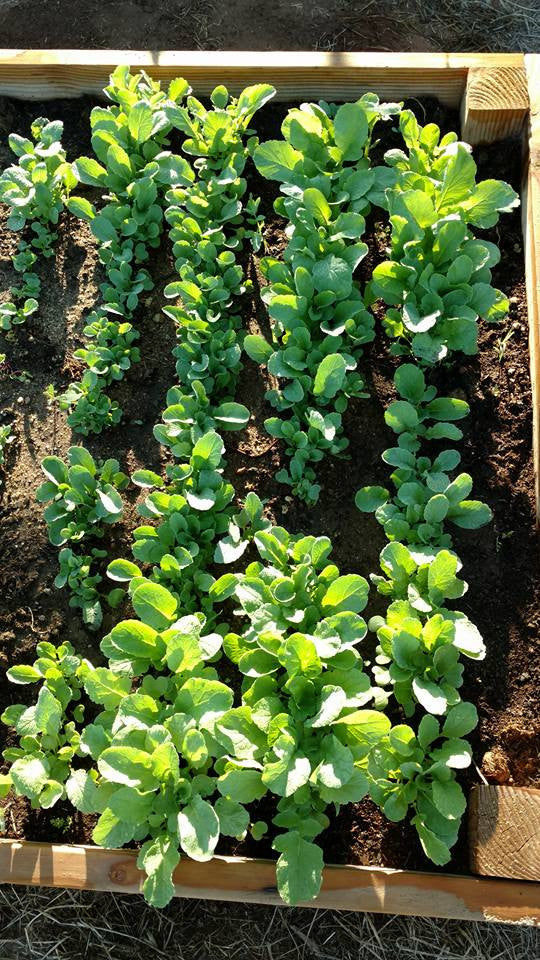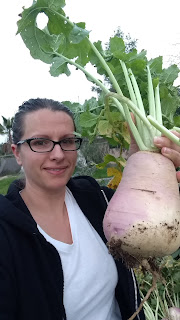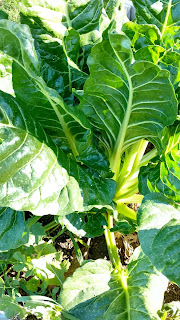I love our raised bed gardens!!! There are so many benefits such as less water usage, almost zero weeding and best of all, LOTS of food produced in a small space.
I've had so many questions about what to use for Garden Soil. The thing is, you can ask all of the "experts" and there is no absolute "right" way. No one way works for everyone so below you will find some of the recommended recipes for gardens beds. You'll also find my own recommendations based on what has worked for me.
Vegetable plants need loose, free-draining soil with readily available nutrients to produce abundantly. Each year's crop takes a bit of the nutrient base of the soil with it, so this must be returned on an annual basis to keep the garden productive. This means adding amendments every year to maintain a healthy balance of nutrients.
First, a caution for the thrifty. Be wary of advertisements for cheap or free bulk topsoil, as this material is generally scraped from construction sites and may be full of roots and rocks, making it unsuitable planting vegetables. Go to the landscape supply yard and look at the options to make sure you are getting a loose, clean, lightweight material that has compost already mixed in.
If you are building and filling multiple beds, buying bagged soil isn't economical. Call around your area and ask for bulk organic topsoil. You might not be able to find "organic" soil so you can always ask for untreated soil.
1 - 4 foot by 4 foot raised bed takes 16 cubic feet of soil or approx 1/2 a cubic yard of soil
I saw one recipe that called for 1/3 Peat moss, 1/3 vermiculite and 1/3 compost.
This is not a recipe I use. First, peat moss is on the acidic side. Coconut Coir is neutral and a more sustainable addition to your garden. Next, too much vermiculite will keep your soil from retaining moisture and nutrients.
Here's another recipe I found:
- 3 parts compost
- 1 part peat moss
- 1 part vermiculite
Here's my all time favorite from Rodales:
You want the kind that’s dark, rich, and loaded with microorganisms. Fill your beds with a mix of 50 to 60 percent good-quality topsoil and 40 to 50 percent well-aged compost. Before each new growing season, test your soil for pH and nutrient content. You can buy a kit at most home-improvement stores. If your test shows a need for additional nutrients like nitrogen and potassium, raise levels by working in amendments such as bone meal and kelp. Dress beds with an additional ½ inch of compost later in the growing season to increase organic matter and boost soil health.
I use my own version of the above recipe. I add coconut coir to each bed. Depending on what I'm planting, if it needs lighter soil I'll add a bit of vermiculite. Most of our beds are fed with our own DIY Organic Liquid Fertilizer Mix
We've been building up our own compost and amending the topsoil we purchased by the truckload several years ago. If you are just getting started, you might have to shop around for a healthy option.
Sign up for our E-Newsletter





9 comments
I have problems with ants. Small blonde yellowish ants in my beds. I held back on adding my co-co core for fear of ants multiplying in it. My Thyme is doing well with no sign of damage from the ants. Look forward to your comments and suggestions.
Thank you
Linda
Love this website! Where can i buy a good raised bed? We’re not handy enough to make our own plant our own🌾
Enjoyed your presentation at Saturday’s lecture in Longview%. I am just starting raised garden beds using 6’ galvanized animal troughs. I’ve learned to use a Unibit for drainage holes. I’m adding 3” of rock to the bottom, then up to halfway up with branches and leaves. Needed your soil recommendations for the top half%. Thanks for your help,
Need to add to my beds. Thanks for the information.
I would like to know about how to do about pests organically
thanks
keep up the great work enjoy reading them
Oh, my!
That’s a scary, gorgeous — radish?
I need to update my beds – thanks for the information!
I love this site. Its very informative and I enjoy reading about plants and seeds I’ve never heard of before.
I am still sometimes really curious about some of the things i read about so I plan on coming back and asking ALOT of questions.
I will definitely recommend this site to my growing friends.